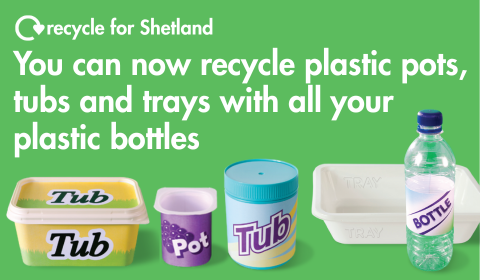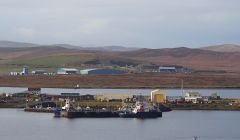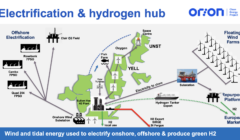Energy / Hydrogen project shortlisted for government funding scheme
Statkraft said the project “proposes to convert green hydrogen produced into green ammonia, which can be used as a sustainable fuel for marine shipping”
A SHETLAND hydrogen project is one of 27 to advance to the next stage of a UK Government funding programme.
The Statkraft project has been shortlisted in the next stage of the Second Hydrogen Allocation Round (HAR2).
The project, on mainland Shetland, is different to Statkraft’s proposed hydrogen production at Scatsta.
A spokesperson for Statkraft said the project “proposes to convert green hydrogen produced into green ammonia, which can be used as a sustainable fuel for marine shipping and to help decarbonise energy usage and, in doing so, contribute significantly to the UK’s industrial decarbonisation goals”.
However, the company was unable to provide any more details around the location as the project is said to be at an early stage.
With further stages to come, the government said a project’s inclusion on the HAR2 shortlist does not guarantee financial support.
The first round of the funding scheme saw 11 projects being allocated more than £2 billion in government funding.
Statkraft is leading the development of potential hydrogen production in the Scatsta area.
It is understood that details of that project are expected to be publicly announced in the near future.
Statkraft also has three wind farm projects in the pipeline in Shetland – Mossy Hill, Beaw Field and Energy Isles.
Statkraft’s hydrogen project manager Brie Foster said the company was pleased to have been shortlisted in the HAR2 scheme.
“This is a very positive sign of the government’s commitment to the green hydrogen and derivatives sector,” she said.
“We’re working to progress our plans for the scheme and look forward to sharing more details in due course.”
There are also plans from EnQuest for hydrogen production at Sullom Voe Terminal – which is not too far from Scatsta.
Become a member of Shetland News
Also in the mix in the surrounding area is the proposed ten-turbine Neshion Energy Park, which could have battery storage too, while a second HVDC subsea power cable between the Scottish mainland and Shetland could make landfall in the area as well.
Commenting on the latest developments with the hydrogen funding scheme, the UK Government’s industry minister Sarah Jones said: “We are deploying hydrogen at a commercial scale for the first time – not just investing in a technology – but investing in British jobs, our proud manufacturing communities and our energy security.
“From distilleries and sustainable aviation fuel to public transport and clean energy generation, hydrogen can power our everyday life and unlock clean energy growth across the country as part of our Plan for Change.”
Dr Emma Guthrie, CEO of the Hydrogen Energy Association, said the “much-anticipated announcement brings vital clarity to the UK’s hydrogen sector, providing a crucial boost for projects that will drive forward the country’s low-carbon transition”.
While hydrogen – which does not release carbon dioxide when burned – is an emerging fuel, it is already being used in some forms of transport, for example.
Talk of hydrogen production in Shetland has typically been around ‘green’ hydrogen, which is made using renewable energy such as wind power.
Become a member of Shetland News
Shetland News is asking its readers to consider paying for membership to get additional perks:
- Removal of third-party ads;
- Bookmark posts to read later;
- Exclusive curated weekly newsletter;
- Hide membership messages;
- Comments open for discussion.
If you appreciate what we do and feel strongly about impartial local journalism, then please become a member of Shetland News by either making a single payment, or setting up a monthly, quarterly or yearly subscription.


















































































